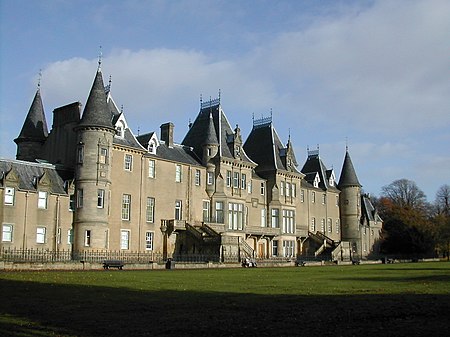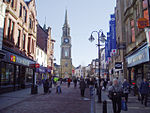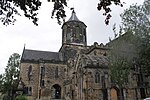Callendar House

Callendar House is a mansion set within the grounds of Callendar Park in Falkirk, central Scotland. During the 19th century, it was redesigned and extended in the style of a French Renaissance château fused with elements of Scottish baronial architecture. However, the core of the building is a 14th-century tower house.During its 600-year history, Callendar House has played host to many prominent historical figures, including Mary, Queen of Scots, Oliver Cromwell, Bonnie Prince Charlie and Queen Victoria. The current building is by far the most substantial historical building in the area, with a 300 ft (91 m) frontage. It is protected as a category A listed building, and the grounds are included in the Inventory of Gardens and Designed Landscapes in Scotland, the national listing of significant gardens.
Excerpt from the Wikipedia article Callendar House (License: CC BY-SA 3.0, Authors, Images).Callendar House
Geographical coordinates (GPS) Address Nearby Places Show on map
Geographical coordinates (GPS)
| Latitude | Longitude |
|---|---|
| N 55.99464 ° | E -3.76711 ° |
Address
, Westfield
Scotland, United Kingdom
Open on Google Maps










